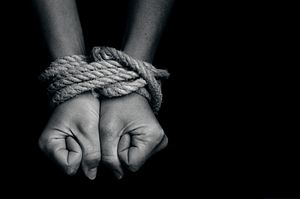Suraya was 14 when she was picked up from Pokhra and taken to a camp in an unknown location where she was forced to live without food for three days. During this time, she was raped multiple times by more than a dozen men. She was then taken on a long journey across the border, with no visa checks, eventually winding up in Delhi. This was in 2009.
I met her for the first time at one of the brothels on Garstin Bastion (GB) Road where I had gone for a story. This was August 2013.
Suraya later put me in touch with others who were brought to India in the same way and also those who fled and went back to Nepal. This month in Kathmandu, I met many girls who fled from these brothels in India and came back to their home country. Most of them are pregnant and some of them had already given birth to babies that were sent back to Nepal. Some of these mothers are trying to get their babies back by fighting court cases that do not allow them access to their own child. As abominable as it sounds, this is the story of thousands of women in Nepal. According to some NGOs, 12,000 to 15,000 girls each year are trafficked from Nepal across the border where they are sold into Indian brothels and forced to become prostitutes.
These girls are as young as 7 years old and as old as 24 years old, although the average age has remained about 15.
Although many of these girls are kidnapped from small villages and towns in Nepal, many of them are also sold outright by their own families for money.
Kajol, now 31, was married off in exchange for money when she was 14. Within a week of her marriage, her husband sold her again to the managers of the brothel on GB Road in Delhi, where she worked for several years. She gave birth to five children, all of whom were sent back to Nepal. She was told all her children had been adopted by foster parents. But since she came back to Nepal last year, she has been looking for her children. There is no sign of them or their foster parents. “I have gone looking for them in all the places I was told they have been sent to, have been chasing NGOs and journalists to help me find my children but there is no hope,” she told The Diplomat.
“Some people tell me they never came back. I am afraid they are begging on the streets, maybe in different places and will never find each other. I am afraid they will never find out their mother is still alive.”
Most girls who are trafficked are from very poor families from villages where they or their families are lured by false marriages, or the promises of employment or education.
According to human rights activist Danielle Cevis, “They are usually processed through Kathmandu on their way to the Nepal-India border, where they face a very meager checkpoint. They and their traffickers are not required to show a passport, residence permit, or visa as they cross into India. When they reach their destination at a brothel in an Indian city, they quickly learn of their fate.”
Cevis says most of them are virgins, which is more valuable to traffickers (the myth that having sex with a virgin or younger girl will cure HIV and other STDs is common). “All of these girls are required to initiate sex with clients within a day,” Cevis told The Diplomat.
Gang-rapes and beatings are common practice and more abuse is carried out when they are imprisoned in cages. Torture is used as a strategy to ensure their future compliance. Most of these innocent girls are forced to have sex with as many as 40 clients a day.
Any sign of protest or attempt to escape brings them more torture and beating.
After several years, many of these girls catch diseases, including AIDS. Although the data produced by NGOs and researchers is fluctuating, UNICEF reports that as many as 7,000 women and girls are trafficked out of Nepal to India every year, and around 200,000 are now working in Indian brothels.

































